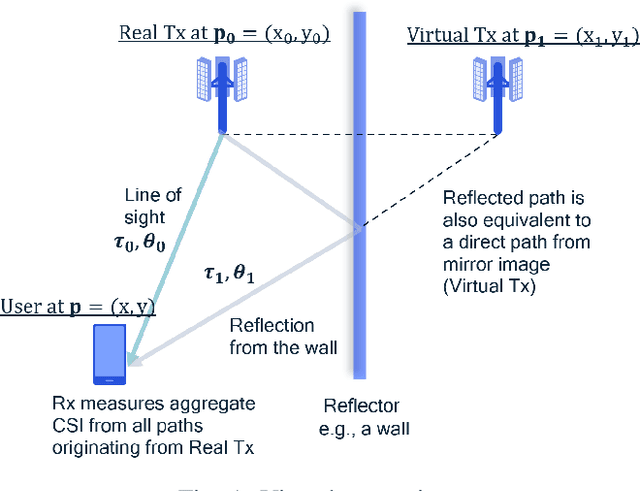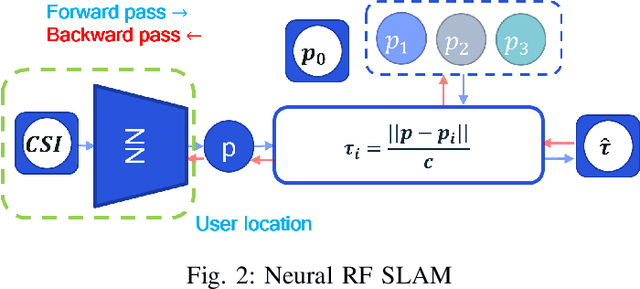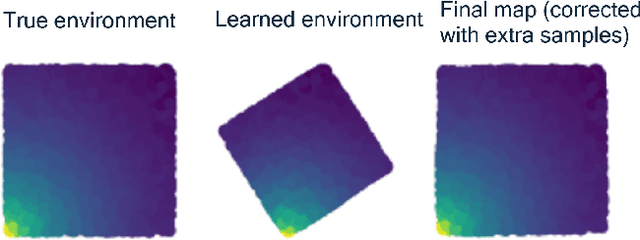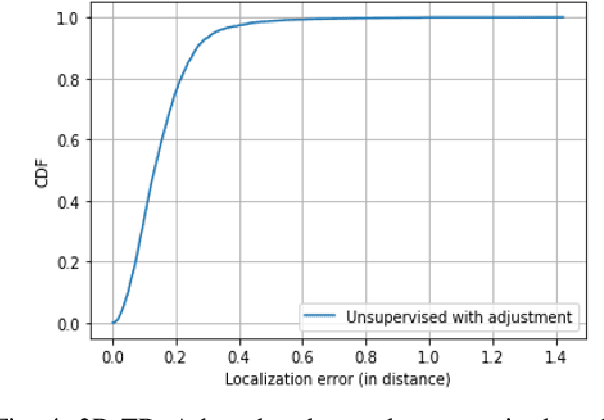Srinivas Yerramalli
Neural 5G Indoor Localization with IMU Supervision
Feb 15, 2024



Abstract:Radio signals are well suited for user localization because they are ubiquitous, can operate in the dark and maintain privacy. Many prior works learn mappings between channel state information (CSI) and position fully-supervised. However, that approach relies on position labels which are very expensive to acquire. In this work, this requirement is relaxed by using pseudo-labels during deployment, which are calculated from an inertial measurement unit (IMU). We propose practical algorithms for IMU double integration and training of the localization system. We show decimeter-level accuracy on simulated and challenging real data of 5G measurements. Our IMU-supervised method performs similarly to fully-supervised, but requires much less effort to deploy.
Neural RF SLAM for unsupervised positioning and mapping with channel state information
Mar 15, 2022



Abstract:We present a neural network architecture for jointly learning user locations and environment mapping up to isometry, in an unsupervised way, from channel state information (CSI) values with no location information. The model is based on an encoder-decoder architecture. The encoder network maps CSI values to the user location. The decoder network models the physics of propagation by parametrizing the environment using virtual anchors. It aims at reconstructing, from the encoder output and virtual anchor location, the set of time of flights (ToFs) that are extracted from CSI using super-resolution methods. The neural network task is set prediction and is accordingly trained end-to-end. The proposed model learns an interpretable latent, i.e., user location, by just enforcing a physics-based decoder. It is shown that the proposed model achieves sub-meter accuracy on synthetic ray tracing based datasets with single anchor SISO setup while recovering the environment map up to 4cm median error in a 2D environment and 15cm in a 3D environment
A Deep Reinforcement Learning Framework for Contention-Based Spectrum Sharing
Oct 05, 2021



Abstract:The increasing number of wireless devices operating in unlicensed spectrum motivates the development of intelligent adaptive approaches to spectrum access. We consider decentralized contention-based medium access for base stations (BSs) operating on unlicensed shared spectrum, where each BS autonomously decides whether or not to transmit on a given resource. The contention decision attempts to maximize not its own downlink throughput, but rather a network-wide objective. We formulate this problem as a decentralized partially observable Markov decision process with a novel reward structure that provides long term proportional fairness in terms of throughput. We then introduce a two-stage Markov decision process in each time slot that uses information from spectrum sensing and reception quality to make a medium access decision. Finally, we incorporate these features into a distributed reinforcement learning framework for contention-based spectrum access. Our formulation provides decentralized inference, online adaptability and also caters to partial observability of the environment through recurrent Q-learning. Empirically, we find its maximization of the proportional fairness metric to be competitive with a genie-aided adaptive energy detection threshold, while being robust to channel fading and small contention windows.
* 14 pages, 11 figures, 4 tables
 Add to Chrome
Add to Chrome Add to Firefox
Add to Firefox Add to Edge
Add to Edge